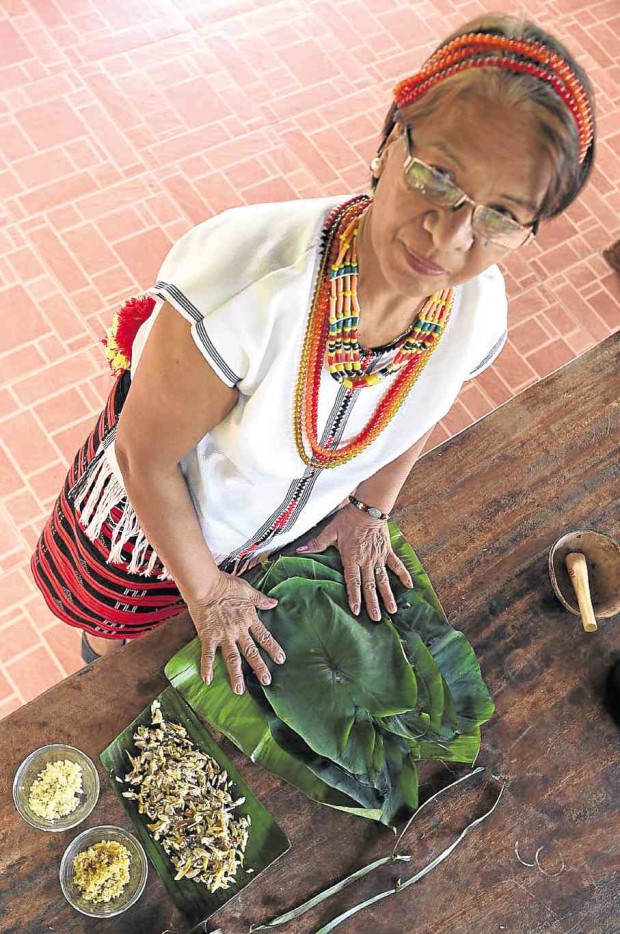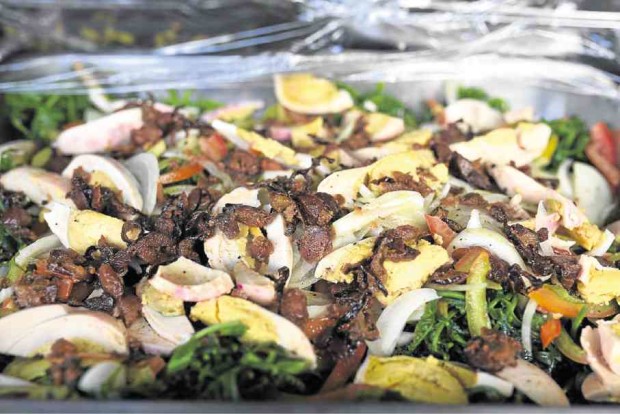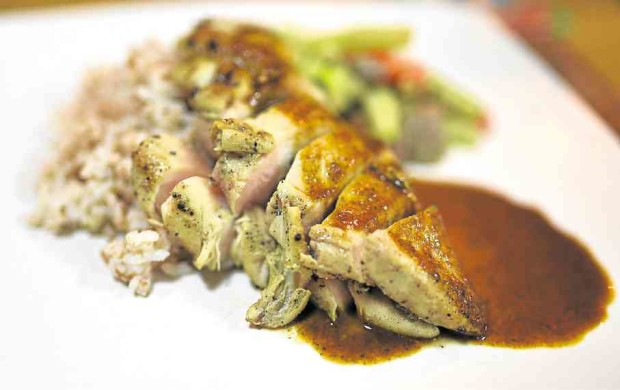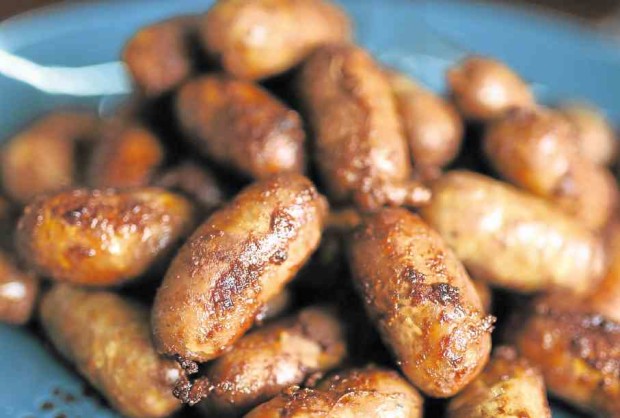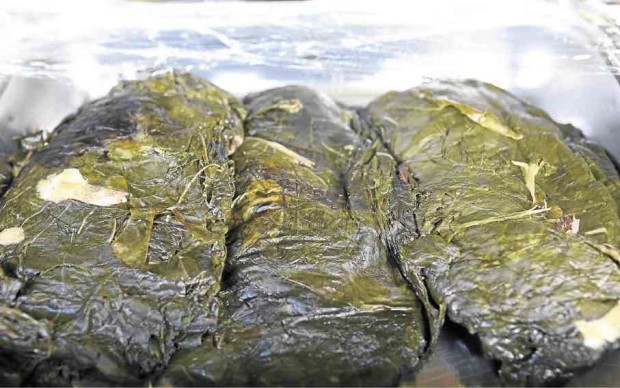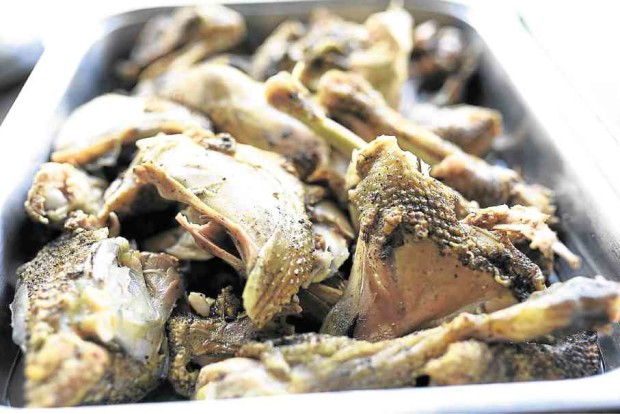Mountain food high
KIANGAN, Ifugao—Family reunions in this upland town mean coming home to dishes prepared the Ifugao way.
In most family gatherings in the Cordillera region, reconnecting ties is as exciting as a bite of etag (salted pork), watwat (chunks of boiled meat served during rituals), and pinuneg (blood sausage).
But sharing the iconic dishes with people who did not grow up in the highlands could be a challenging task, said Charlynne Macalalag, a culinary instructor of University of the Cordilleras (UC). She described these as “acquired tastes” but said promoting local cuisine was a way of nurturing native food.
Macalalag was among the instructors who witnessed how traditional dishes were prepared during a tour of Ifugao province from Oct. 3 to 5 to help the Department of Tourism (DOT) promote Cordillera cooking.
“With the proliferation of fastfood chains and international franchises, developing local cuisine would help empower homegrown industries,” she said. It also helps pass on Cordillera traditions, she added.
Survival food
Laarni Andam, dean of UC culinary school, said the tour allowed a basic insight into the dishes as survival food.
“They cook whatever is the harvest or catch of the day,” she said, adding that natives have sustained the ways that their ancestors had developed to stretch the food supply until the next harvest.
Etag and pinunnog (smoked sausage) are actually meat preservation techniques.
“Whatever vegetables are harvested for the day are usually boiled with salt or with the meat preserves,” Andam said.
An eye-opener is the fact that each dish is tied to a ritual.
“We cannot pass down the rituals but we can pass down the flavors along with the stories of their origins. That is one way of preserving culture,” Macalalag said.
Authentic dishes
Step by step, the women of Kiangan showed culinary experts how to prepare authentic Ifugao dishes.
At first glance, inlagim may appear to be just boiled chicken. But the dish is attached to most, if not all, Ifugao rituals, according to Anita Tindaan of Kiangan.
Tradition requires chicken to be butchered by a mumbaki (indigenous priest or ritual leader) who reads its bile to determine the pleasure of the ancestral gods.
“Inlagim translates to burning the feathers of butchered chicken,” Tindaan said.
“We do not add so many ingredients to the inlagim. It is usually just salt, ginger and onion,” she said.
Inutum is grilled layers of gabi (yam) leaves with onions, ginger and garlic packed in banana leaves. Fish or chopped pork is added and then grilled for about an hour.
Highland sausage
“Traditional cooking uses artificial flavors. We use what are available—salt, ginger, onion, and garlic. It is healthier that way,” said Lucia Martin, secretary of the Kiangan Homestay Association.
Pinunnog has chopped meat in the same way that the longganisa (native sausage) is stuffed with ground pork. The chopped pork is seasoned with salt and garlic, inserted in pork intestines and placed on the hay-ungan (a compartment above a fireplace) for smoking.
“The pinunnog rests at the hay-ungan like a long snake,” to allow cooks to quickly slice a piece to flavor boiled beans or other vegetables on the menu for the day, Martin said.
No preservative
Alexander Molintas, a culinary instructor of University of Baguio, said the pinunnog reminded him of Chinese chorizo. “I did not know we can produce pinunnog when we exert so much effort to look for imported sausages to flavor many dishes,” he said.
The sausage adds flavor to soup, salad and pasta, said Molintas, a son of an Ibaloy and a Kapampangan. “I am happy to know that the pinunnog does not have any preservative; it is healthier,” he added.
Andam said: “We want to share Cordillera dishes by making them more palatable and presentable but maintaining their authenticity.”











